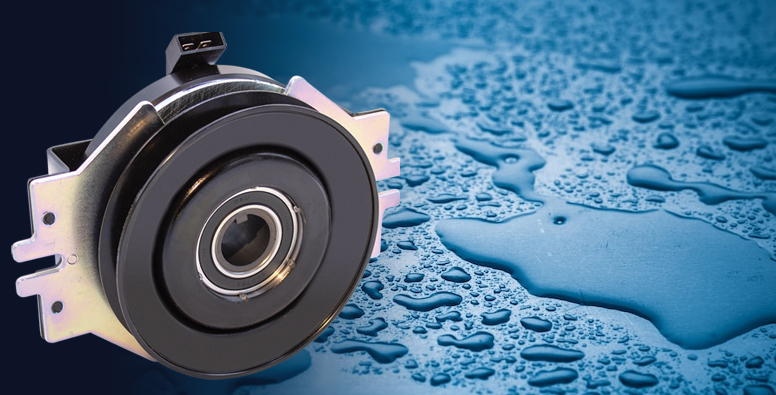Notice: Undefined index: cid in /home/ogurasas/public_html/featured_product_pto.php on line 142

Can my PTO clutch get wet?
Ogura PTO clutch brakes are designed to operate outdoors.
Ogura PTO clutch brakes are used in a wide variety of applications, but they are commonly mounted on engine shafts of residential and commercial riding mowers. These types of applications are exposed to dirt, grime, and water. These same types of clutches are also used on portable sawmills, concrete grinders, and other outdoor power equipment. They are often used for safety, operator convenience, fuel savings, extending product life, and cold weather starting. Ogura PTO clutch brakes are mostly mounted on engine shafts up to about 40HP.
The primary concern for outdoor applications is dust and water. Dust is often inevitable, but it should work its way out of contact surface area when the clutch engages. The contact surfaces are steel.
Water is another concern. As opposed to some industrial clutches, there is no friction material used, so we do not need to worry about swelling of materials. These products are coated with Ogura's e-coating that has been perfected by making clutches for the automotive market. It helps prevent rust on the outer surfaces of the clutch. The friction contact surfaces are another story. They will not be coated because this is a wear surface, and it will simply burnish/wear off. Water will lower the immediate coefficient of friction. If the clutch is loaded beyond its torque transfer capacity while wet, it will be prone to slip, therefore it is suggested not to engage the clutch at full load if the clutch is wet. A few cycles at low load and idle speed should generate some heat and dry up the clutch.
If rust develops on the friction surface, it can be burnished to restore it. Some Ogura clutches are used on very demanding applications such as salt and fertilizer spreaders where they often sit for a season while exposed to corrosive agents. When the equipment is put back into service, the surfaces are burnished ready to use again. Burnishing is the process of wearing-in a clutch. It will take off any high spots, including rust. If the clutch is not welded together by the rust, it should be able to cycle and burnish without causing permanent damage. Burnishing should be done at low speed and low load. As cycling generates heat, be sure to let the clutch naturally cool in between cycles. Every machine is different, but 30 to 60 seconds between cycles is generally adequate.
Bearings are sealed to protect from water intrusion. The equipment manufacturer may also protect the seal from high pressure washing by fitting a large washer, spacer, or drive pulley up against the clutch's bearing location.
The brake coil is protected by a high-temperature epoxy, keeping water away from the magnet coil.
Connectors should be kept as clean and dry as possible. Some applications use a Weather-Pack connector for added dust and moisture protection. If the terminals become rusty and cause an electrical connection issue, try cleaning them and testing the connection again.
For mowing applications, it should be noted that wet grass puts extra demand on the mowers and the clutch. Clutch brakes are designed to handle a certain amount of inertia. If the blades try to cut through tall and wet grass, the inertia becomes larger, and the clutch is more susceptible to slipping. If grass is tall and wet, the safest thing to doit to let it dry to protect the clutch. If that is possible, keep the engine rpm as slow as possible so that it reduces the energy that clutch needs to absorb during engagement, since energy is proportional to speed squared multiplied by the reflected inertia.
Ogura GT series PTO clutch-brakes are made in a variety of configurations and typically mount on gas and diesel engines rated up to 40 HP. Bore sizes match the typical engine shaft sizes. Pulley sizes can vary based on machine requirements. Some have hub outputs to mount your own pulley, sprocket or coupling half. Clutch torque is rated up to 400 lb-ft on the larger units. These clutches typically operate on 12 or 24VDC.
Benefits of using an Ogura PTO clutch brake:
- Long life
- Safety
- Fuel and energy savings
- Built for outdoor operation
- Many years of proven success
- For use with operator presence controls
- Available with a soft start controller
- Custom designs available based on minimum order quantities
